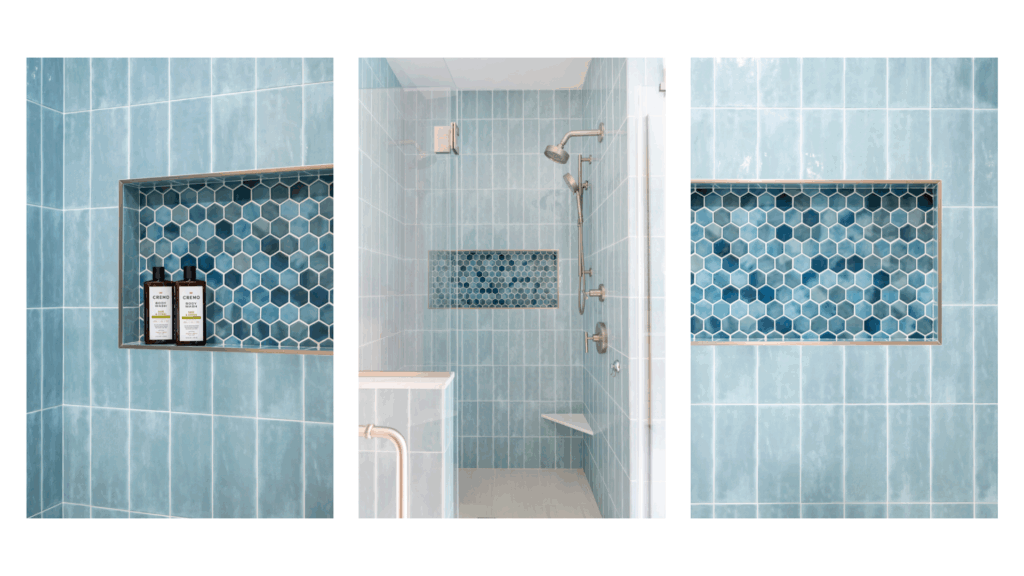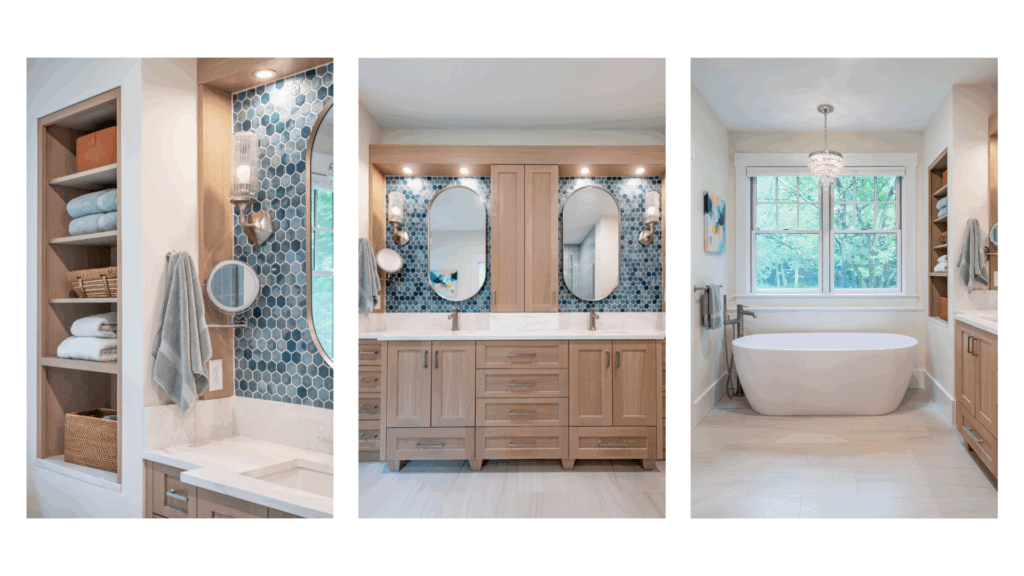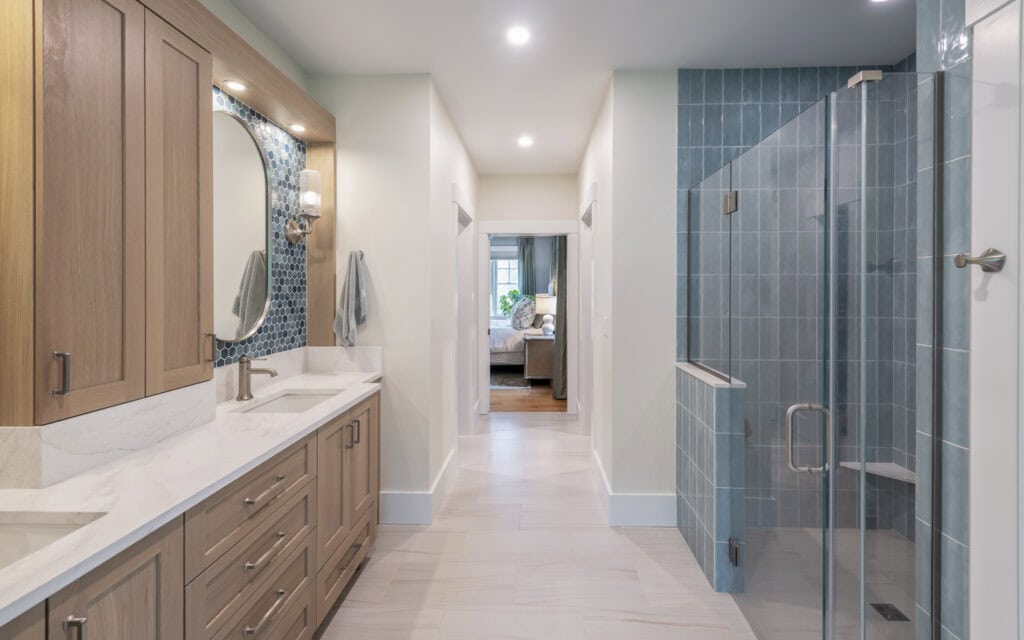While subway tile often gets the spotlight, there’s something refreshingly intentional about stacking tile vertically. This layout feels structured and elevated without trying too hard. Which is ideal for clients who want their renovation to feel current but not caught in a trend cycle.
In The Dover Mariner’s Bath, vertically stacked aqua tile created a subtle rhythm across the shower walls—proof that vertical tile bathroom design doesn’t need to shout to be heard. Here’s why this approach works so well, and how to make it work in your own space.
1. Vertical Tile Helps Your Bathroom Feel Taller & More Open
This layout draws the eye upward, giving the illusion of added height and space. It’s a smart move for bathrooms with lower ceilings or where you want to make the most of natural light. A vertical layout can also elongate the walls and add quiet movement, which is especially effective in showers and behind vanities.

2. A Clean, Structured Look That Fits a Range of Styles
Unlike trendy shapes or bold color blocking, vertical tile works across many aesthetics—from coastal and transitional to tailored and minimalist. In the Dover Mariner’s Bath, soft aqua ceramic tile stacked vertically delivered both interest and simplicity. It doesn’t feel busy, but it doesn’t disappear either.

3. Subtle Pairings Make Vertical Tile Feel Elevated
Pairing vertical tile with complementary textures can make the look feel layered, not flat. In this project, we grounded the room with 12×24 porcelain tile underfoot, used a soft hexagon backsplash both behind the vanity and in the shower niche, and introduced rift-cut oak cabinetry for added warmth.
Considering vertical tile for your renovation?



